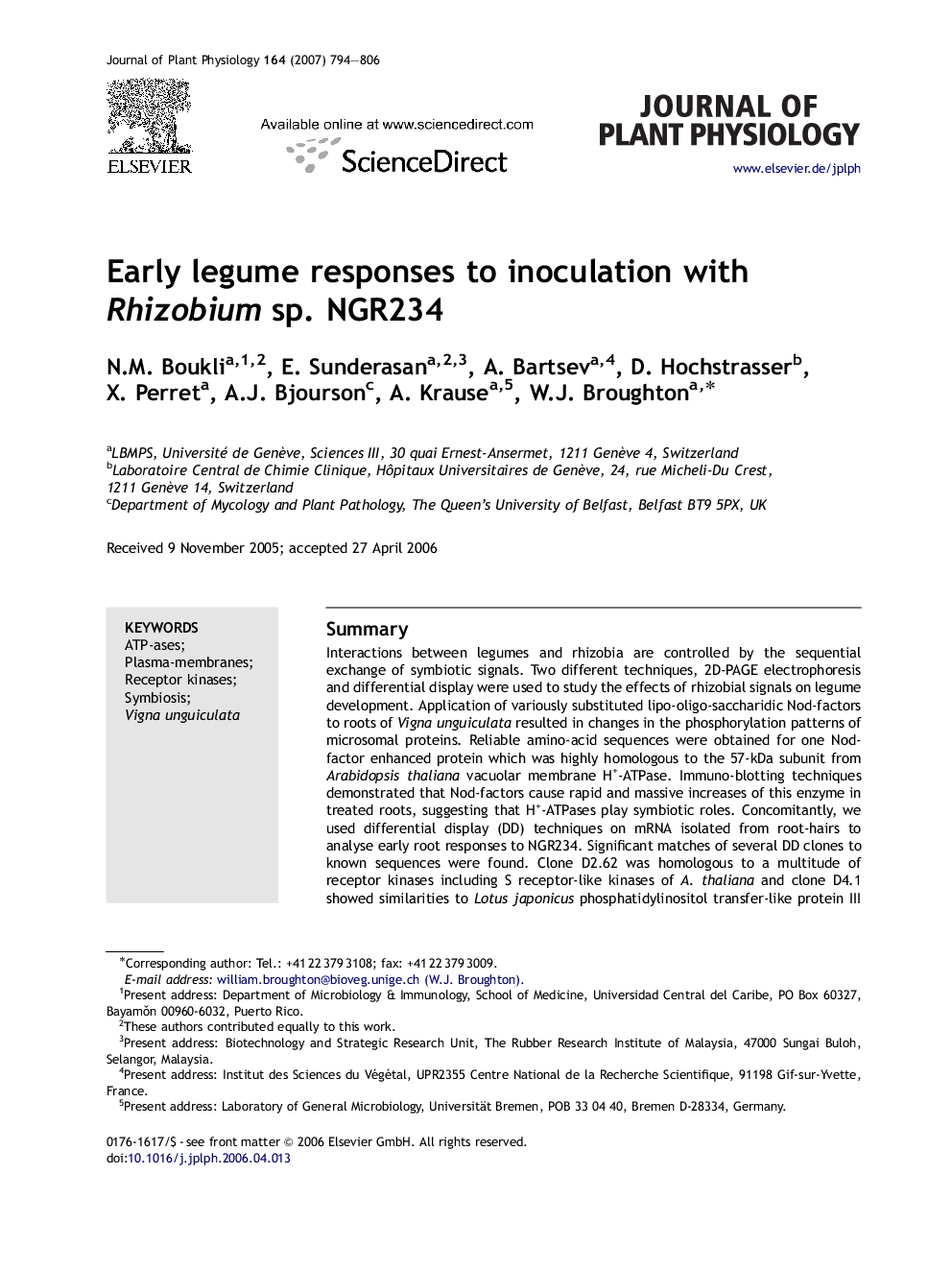| Article ID | Journal | Published Year | Pages | File Type |
|---|---|---|---|---|
| 2057514 | Journal of Plant Physiology | 2007 | 13 Pages |
SummaryInteractions between legumes and rhizobia are controlled by the sequential exchange of symbiotic signals. Two different techniques, 2D-PAGE electrophoresis and differential display were used to study the effects of rhizobial signals on legume development. Application of variously substituted lipo-oligo-saccharidic Nod-factors to roots of Vigna unguiculata resulted in changes in the phosphorylation patterns of microsomal proteins. Reliable amino-acid sequences were obtained for one Nod-factor enhanced protein which was highly homologous to the 57-kDa subunit from Arabidopsis thaliana vacuolar membrane H+-ATPase. Immuno-blotting techniques demonstrated that Nod-factors cause rapid and massive increases of this enzyme in treated roots, suggesting that H+-ATPases play symbiotic roles. Concomitantly, we used differential display (DD) techniques on mRNA isolated from root-hairs to analyse early root responses to NGR234. Significant matches of several DD clones to known sequences were found. Clone D2.62 was homologous to a multitude of receptor kinases including S receptor-like kinases of A. thaliana and clone D4.1 showed similarities to Lotus japonicus phosphatidylinositol transfer-like protein III and late nodulin 16. Independent confirmatory analyses of these differentially expressed clones indicated expression at very low levels.
